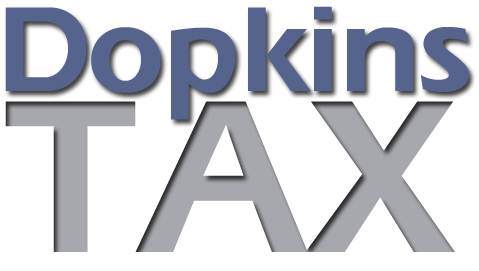The IRS Giveth, the IRS Limiteth, and the IRS Taketh Away – Retail/Restaurant Remodel-Refresh Safe Harbor
November 10, 2016 | Authored by Dopkins Tax Advisory Group
November 10, 2016 –  Rev. Proc. 2015-56 established an automatic accounting method change to adopt a safe-harbor method of accounting for remodel-refresh expenditures for qualified taxpayers primarily engaged in retail or restaurant businesses (including certain landlords). This safe harbor allows qualifying taxpayers to immediately deduct 75% and capitalize 25% of their qualifying remodel-refresh costs. Sounds great! But there are several limitations:
Rev. Proc. 2015-56 established an automatic accounting method change to adopt a safe-harbor method of accounting for remodel-refresh expenditures for qualified taxpayers primarily engaged in retail or restaurant businesses (including certain landlords). This safe harbor allows qualifying taxpayers to immediately deduct 75% and capitalize 25% of their qualifying remodel-refresh costs. Sounds great! But there are several limitations:
- A business or landlord is a qualified taxpayer only if it has an applicable financial statement (generally, this means an audited financial statement or a 10-k filed with the SEC).
- A qualifying taxpayer must conduct its activities under specific NAICS codes:
- 44 or 45; however, automotive/motor vehicle dealers, gas stations, manufactured home dealers, and non-store retailers are excluded.
- 722; however, hotels/motels, civic organizations, amusement parks, country clubs, and any taxpayer within code 7223 (food service contractors, caterers, and mobile food trucks) are excluded.
- Landlords qualify if the building they own or lease is leased or sub-leased to a taxpayer that operates under the above NAICS codes.
- In addition to these major limitations, the Rev. Proc. also contains approximately two pages of specific exclusions.
Huh?
With all of these exclusions and with the tangible property regulations (remember those?) being relative new, there were obviously many questions surrounding this Rev. Proc. In response, the IRS released fourteen frequently asked questions to help clarify these provisions. One important aspect of the Rev. Proc. that was explained in the FAQ’s was related to the potential tangible property regulation method changes that would have to be adjusted in order to utilize the remodel-refresh safe harbor method. Specifically, a taxpayer desiring to make this change is required to revoke and not use partial disposition elections on qualifying property, place certain capitalized costs in general asset accounts (GAAs), adopt the safe-harbor method on a timely filed 3115, and appropriately classify capitalized costs under § 168(e). While these FAQ’s are helpful in providing additional guidance related to this Rev. Proc., for most taxpayers who have not already adopted the safe-harbor method these FAQ’s come too little, too late:
- The FAQ’s were released on September 19, 2016. However, for all calendar year-end filers who did not adopt the safe harbor on their 2015 tax return, the ability to adopt this method as an automatic change appears to have ended on September 15, 2016.
- Proc. 2016-29 waived the prohibition on automatic changes for a taxpayer that filed a change for the same item during any of the five taxable years ending with the year of change. However, this waiver only applied for year-ends occurring after December 31, 2013 and before December 31, 2016.
- Therefore, a calendar year-end taxpayer wishing to adopt this safe harbor on a 2016 tax return will be precluded from filing for an automatic method change if the taxpayer previously filed an accounting method change relating to identifying the unit of property, deducting repairs and maintenance, and capitalizing improvements under the final tangible property regulations (change #184).
So, unfortunately, this appears to be a case in which the IRS created a safe harbor that could really be a benefit for all taxpayers, established qualifications that made it difficult for small and intermediate sized taxpayers to qualify, further limited its applicability to exclude specific industries, and then released additional guidance after it was too late to take advantage of the opportunity.
About the Author
Dopkins Tax Advisory Group
Our tax professionals include specialists who are proactive, strategic thinkers who work to maximize your cash flow. In addition to cash flow considerations, we also believe that tax planning is most effective when it is integrated with, and fully supports, your business plan and personal goals. Our approach to tax planning will help you better understand the tax implications of any proposed course of action, and together we can make the right decisions for your business. Contact us via email link below for more information. for more information contact your Dopkins Client Service Coordinator or Gregory Urban at gurban@dopkins.com

